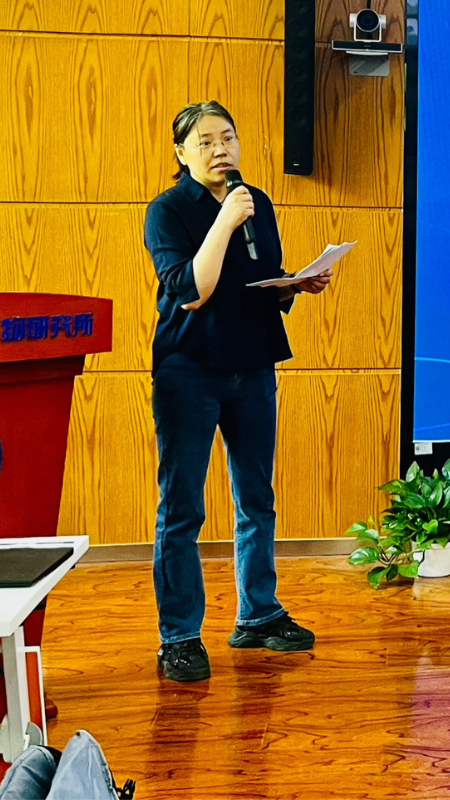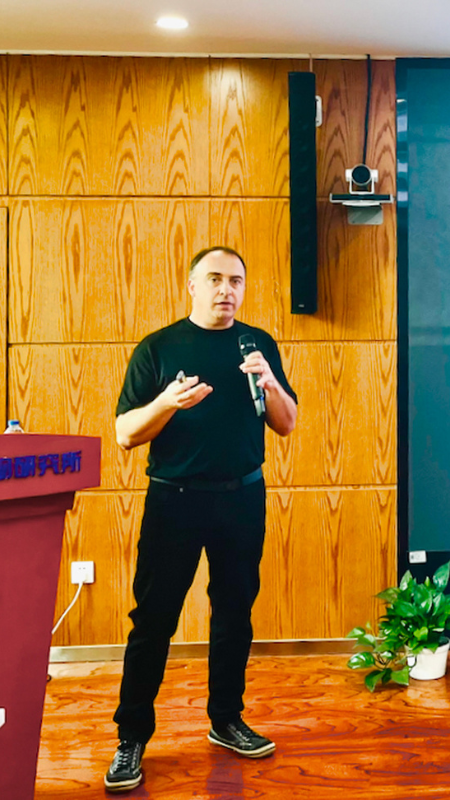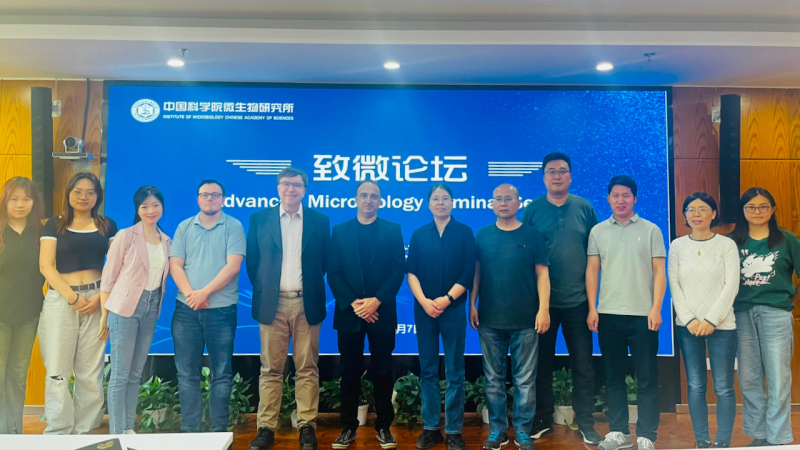Every 1.5 millionths of a second the Sun releases more energy than all humans consume in an entire year, according to the National Aeronautics and Space Administration (NASA). This endless source of energy is something humanity is trying to exploit, replacing fossil fuels to meet the needs of an ever-growing population.
However, the contribution of solar energy to global renewable electricity production remains low at 3.6%. Scientists are still working to enhance the efficiency of technologies that convert solar energy into electricity, and while promising strategies are in development, they require further refinement.
The international symposium on light-energy conversion and bio-utilization organized by the CAS-TWAS Centre of Excellence for Biotechnology (CoEBio) on 7 May 2024, in Beijing, China focused on promising strategies that included other natural energy-producers such as bacteria.

"If we wish to make tangible progress in the technologies currently used to produce energy from sunlight, or other sources, we need to increase global collaborations and merge interdisciplinary approaches. This was indeed one of the purposes of this event," said Professor Yanping Zhang, director of CoEBio in her welcome address.
With over 50 faculty members and graduate students from China in the audience, she added, the CAS-TWAS symposium facilitated discussions, paving the way for new projects and collaborations.
Among the speakers was Franco Cabrerizo, chair of the TWAS Young Affiliates Network (TYAN), and member of the TWAS-LACREP Executive Council and The National Research Council of Argentina (CONICET). "TYAN has already an active task group working on energy production, which we want to expand," said Cabrerizo. "This symposium offered an incredible opportunity to increase young scientists' skills in a growing field like light energy conversion."
He mentioned a joint collaboration started in 2018 with TYAN members Ronald Vargas, from Venezuela and currently a professor and research member at CONICET, and Yin Li of the Institute of Microbiology of the emphasized Chinese Academy of Sciences (IMCAS). The project, Cabrerizo explained, is about developing new materials and strategies for solar energy conversion and environmental restoration.
"With Ronald, we are working to enhance the performance of photoelectrolytic cells. These devices use light that hits, for example, a metal immersed in a solution, to induce complex chemical reactions," said the TYAN chair. "Through these reactions we obtain a dual benefit: we are able to eliminate pollutants from wastewater, and obtain hydrogen, a clean and secure form of energy," he explained.
Cabrerizo also mentioned dye-sensitized solar cells (DSSCs), another device that could turn sunlight into usable electricity. "Using photosensitive dyes, DSSCs mimic the natural process of photosynthesis to convert sunlight into electricity," he said.
When the dye absorbs light, Cabrerizo explained, it releases a pool of electrons. These electrons are then captured by a layer of a semiconductor material, typically titanium dioxide, and directed into an external circuit, creating an electric current.

"DSSCs are very attractive due to their low production costs and easy manufacturing process. To date, the percentage of sunlight that they can convert into electricity is around 7-10%, lower than other, more expensive devices such as silicon-based cells," added Cabrerizo. That's why several research projects are currently in progress worldwide, focused on improving efficiency, stability, scaling up production, to make them competitive compared to other traditional solar cells.
Wolfgang Hess, a professor of genetics and experimental bioinformatics at the University of Freiburg, Germany, emphasized the potential of cyanobacteria for clean energy production, emphasizing their ability to grow easily in “energy farms”.
Cyanobacteria, commonly known as blue-green algae because of their bluish-green (cyan) colour, are one of the largest and most important groups of bacteria on earth. They were the first oxygen-producing organisms to appear about 4–2.5 billion years ago. They tolerate the most extreme conditions, and are found from the poles to the equator, including marine, freshwater and terrestrial habitats.
"They are extraordinary energy producers because they perform the oxygenic photosynthesis, converting light energy, that is solar light, into chemical energy," said Hess. Through a quite complex process, they split water into its basic components, oxygen, and hydrogen, which are then released outside the cell.
"This is how these bacteria filled our atmosphere with this gas, allowing life on Earth, 2.5 billion years ago. Today, every fifth breath we take, we use the oxygen that marine cyanobacteria produce," added Hess.
But there's more to their role. Through the energy that they produce, they can absorb carbon dioxide from the atmosphere, which makes them natural-born CO₂ scavengers that can mitigate global warming. In addition, some species can absorb atmospheric nitrogen, releasing it into the soil. "This latter capacity is very important because our agriculture relies massively on nitrogen-based fertilizers," commented Hess.
"Naturally occurring cyanobacteria are commercially very important because they can produce pigments, other chemicals, and various substances for human consumption—like the famous spirulina algae," added Hess. "But if we genetically modify them, we can use their skills to produce ethanol, biodiesel, and even hydrogen, which has potential for various industrial applications."
In his keynote speech, Professor Tao He of the CAS Key Laboratory of Nanosystem and Hierarchical Fabrication at the National Center for Nanoscience and Technology in Beijing, China, explained a way to convert CO2 and water into solar fuels, synthetic chemical fuels that can be stored for long periods and transported anywhere. The process, He explained, emulates natural photosynthesis, with sunlight as the sole source of energy.
"Since carbon dioxide and water are both readily available on earth, using sunlight to convert them into chemical fuels may provide an eco-friendly alternative to our present energy infrastructure," He said, adding that his research group is exploring efficient ways to obtain such fuels.
Students at the symposium built new knowledge starting from their own research subject, He noted, and the event set the stage for new collaborations. "I believe that this kind of event can really broaden the students' horizon and help them with ongoing and future research."

"Our workshop, and similar initiatives, aspire to advance the education of students and scholars in the area of biotechnology," Yanping Zhang noted. "By organizing biotechnology training courses, symposia, and workshops, we build future generations of scientists who will support the world population and its growing needs."
Cristina Serra

